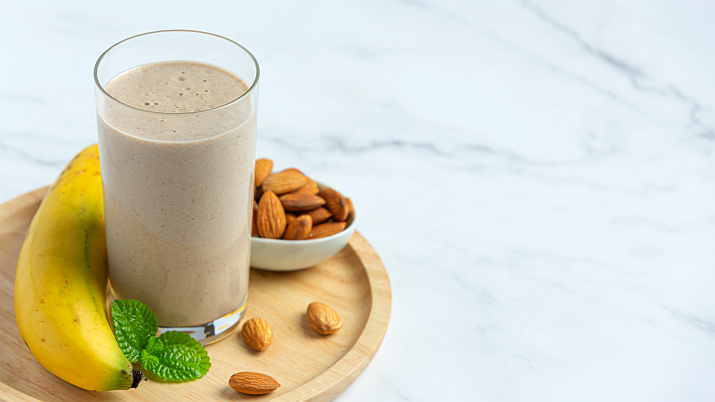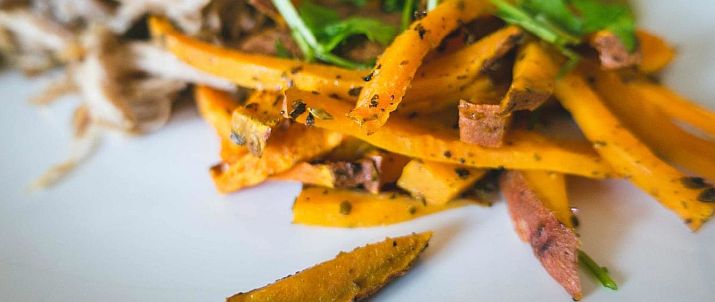
Puerto Vallarta, Mexico – Comfort foods can help relieve stress, especially during the holidays. We can use food as part of a self-comforting strategy if we do it with awareness and make choices that will enhance our health rather than work against it. Harvard Medical School-trained researcher, educator and clinician-healer, Dr. Leslie Korn explains.
Satisfy that Sweet Tooth!
How to substitute healthy sweets and stay satiated and blissful during the holiday.
We often turn to food to relieve stress or unpleasant emotions, which is not inherently a bad thing. The problem arises when we turn to unhealthy, high-carbohydrate, high-sugar, processed foods for comfort. We can use food as part of a self-comforting strategy if we do it with awareness and make choices that will enhance our health rather than work against it.
What Are Comfort Foods?
Comfort foods are different for everybody, but in general, they are commonly high-fat high-sugar refined carbohydrate foods. The sugars and fats in these foods release opioids in the brain, similar to the way narcotics do, thus creating a pleasure response. Even thinking about these foods can trigger pleasurable brain reactions, just as thinking about eating a juicy lemon will stimulate salivary flow.
Our definition of comfort food often comes from what our parents gave us as children to calm us down in times of distress, or these foods may be associated with love; they might be sugary foods like donuts, cookies, and refined carbohydrates. White foods in general seem to be common comfort foods – such as potatoes, bread, sour cream, bananas, and sugar. Comfort food may provide a nostalgic feeling related to cultural or familial traditions. Often we are drawn to fast food comfort food when we haven’t had a chance to prepare healthy foods.
Principle of Substitutions
We crave foods for a variety of reasons: We need the nutrients they offer, and the body provides a message to eat those foods. We also crave foods that we are allergic to; these foods function like a drug. Gluten-containing foods can trigger opioid-like reactions and gluten bingeing is a sign of this reactivity. We crave food that reminds us of a certain time in our life, linked to people we have loved and lost, or comfort foods that are linked to our culture or holiday times. We also crave foods to alter consciousness, such as for comfort and anxiety reduction (carbohydrates and fats), or for energy and focus (proteins and dopamine-rich coffee).
Foods we crave provide chemical reactions that the brain wants and needs. The key is to become familiar with our unique “craving” profile – to learn which foods we crave and when we crave them, to understand the (emotional) biochemistry of the foods, and to find substitutions that address these needs but are healthier and without the side effects. This is the “principle of substitutions,” which means finding an alternative food to provide the same effect, substituting a healthy food for a less healthy one.

Examples of Comfort Food Substitutions
• When craving bread or sweets, try sweet potatoes.
• When craving sugary treats, try a smoothie sweetened with stevia
• When craving chocolate with sugar, try unsweetened cocoa powder with stevia/homemade or stevia-sweetened chocolate candy.
• When craving coffee, try black tea, decaf coffee, herbal coffee substitutes, green tea, or chai.
Try this Sweet-Tooth Soothie Smoothie
This smoothie makes a delicious holiday treat that satisfies the sweet tooth in a healthy way. It is anti-inflammatory, antidepressant, comforting, healthy, and simple to make.
Ingredients
½ cup frozen pineapple
1 fresh banana
1 cup milk (hemp or coconut)
1 tablespoon coconut oil, melted
½ teaspoon turmeric
½ teaspoon cinnamon
½ teaspoon ginger
1-2 threads of saffron
¼ teaspoon ground black pepper
1 teaspoon flax seeds
1 teaspoon matcha green tea powder
¼ cup goat yogurt (optional)
10 drops of liquid stevia (optional)
Directions
Add ingredients to a blender in the following order: frozen fruit, banana, milk, oil, spices, and then remaining ingredients.
Blend until smooth and enjoy!
For more healthy comfort food recipes and substitution ideas, consider taking one of my certification courses or reading one of my books. Find them HERE.

Leslie Korn has lived and worked in Banderas Bay since 1973 conducting research in Traditional Medicine of Mexico. She is a Harvard Medical School and Harvard School of Public Health-educated clinician in clinical practice in Mental Health Nutrition, Integrative Medicine and the prevention of dementia and cognitive decline. She is the author of 8 books, including ‘Natural Woman: Herbal Remedies for Radiant Health at Every Age and Stage of Life.’ To learn more about her work, visit DrLeslieKorn.com. She can be reached at lekorn(at)cwis.org.




